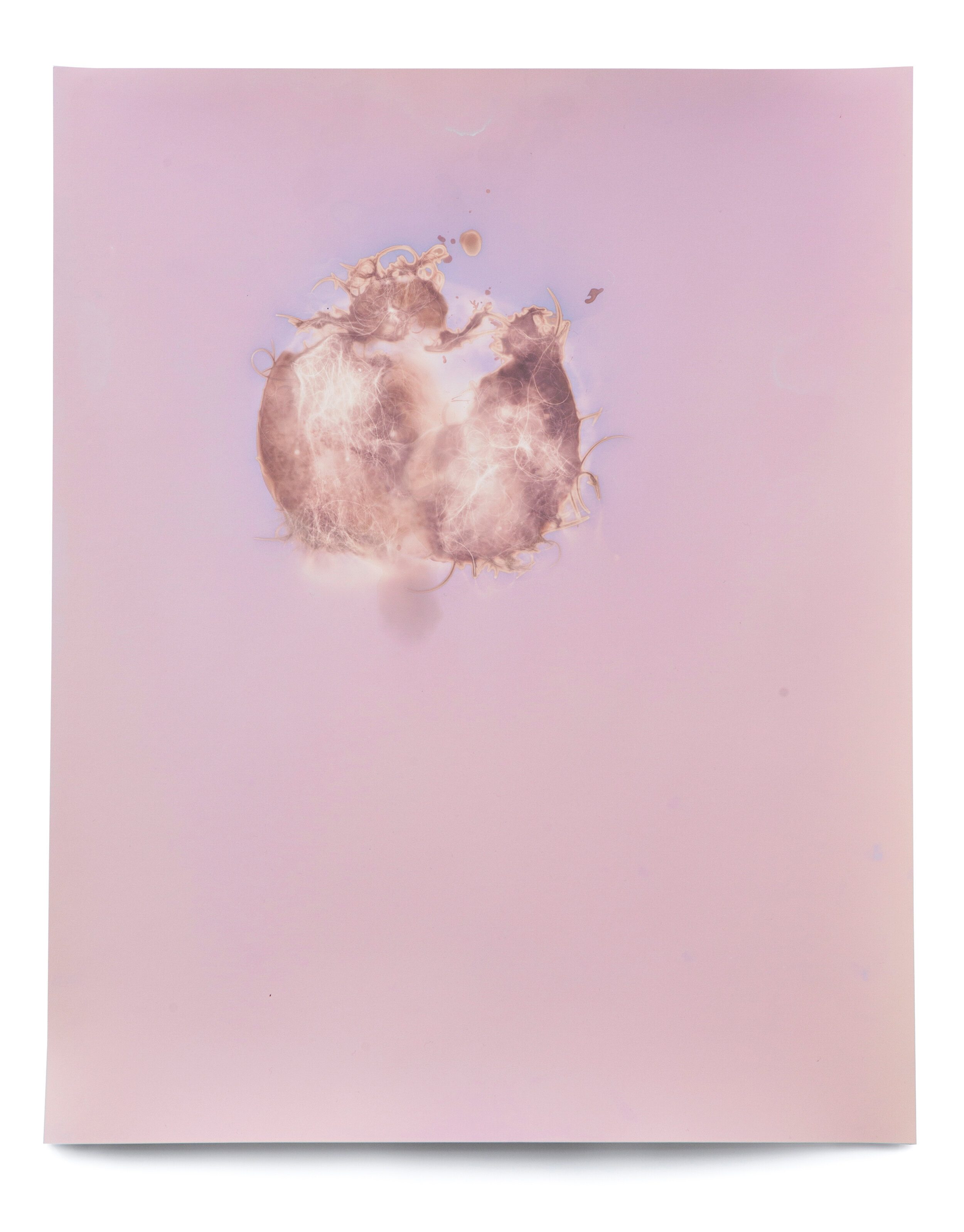Charting the Hours is a series of photographs made by placing (my and my partner's) hair, saliva or blood directly onto photographic paper, disrupting the print's surface and creating an index of two bodies.
The body leaves a trace within its environment; in every space we occupy we exist outside of ourselves. Skin and hair shed, and our DNA floats through these spaces like soft snow, leaving a vestige of ourselves in our intimate interiors. When the pandemic lockdown hit NYC, I found a combination of mine and Adam's hair in the shower drain, evidence of what remains of our bodies but lies outside of our conscious experience. Using the materials available to me at the time, I made a lumen print of the hair. What started as an experiment quickly became an index of two bodies coexisting through a pandemic.
This initial print was exposed for hours, allowing the seemingly black and white paper's colors to blossom, changing as the filtered light in our windows waned. Our visual vocabulary grew as the pandemic persisted. Hair, spit, blood, urine, and nail clippings left their marks on the surface of photographic paper, rewarding us with subdued pastels or lush mauve when exposed to natural and artificial light.
Our collective bodily fluids stuck to the paper marking it in unpredictable ways and permanently changing the chemistry of the paper itself. These abstract images are anchored with a strategically placed antique magnifying glass, which references the history of photography and 1900's scientific imagery. At the same time, ephemera from the body adds a contemporary element by disrupting the paper's surface leaving behind evidence of intimacy and lived experience.
The desire to push photographic materials beyond their intended use has been a critical part of my practice for many years. By working in analog processes such as wet collodion, Polaroid, and now lumen prints, I engage in an ongoing dialog with time, chaos, and chance. All the while, I am using the body as my primary subject matter. In this case, the abstract imagery is a subversion of figurative photography and an ongoing investigation of the body as both vulnerable and ever-changing.




















